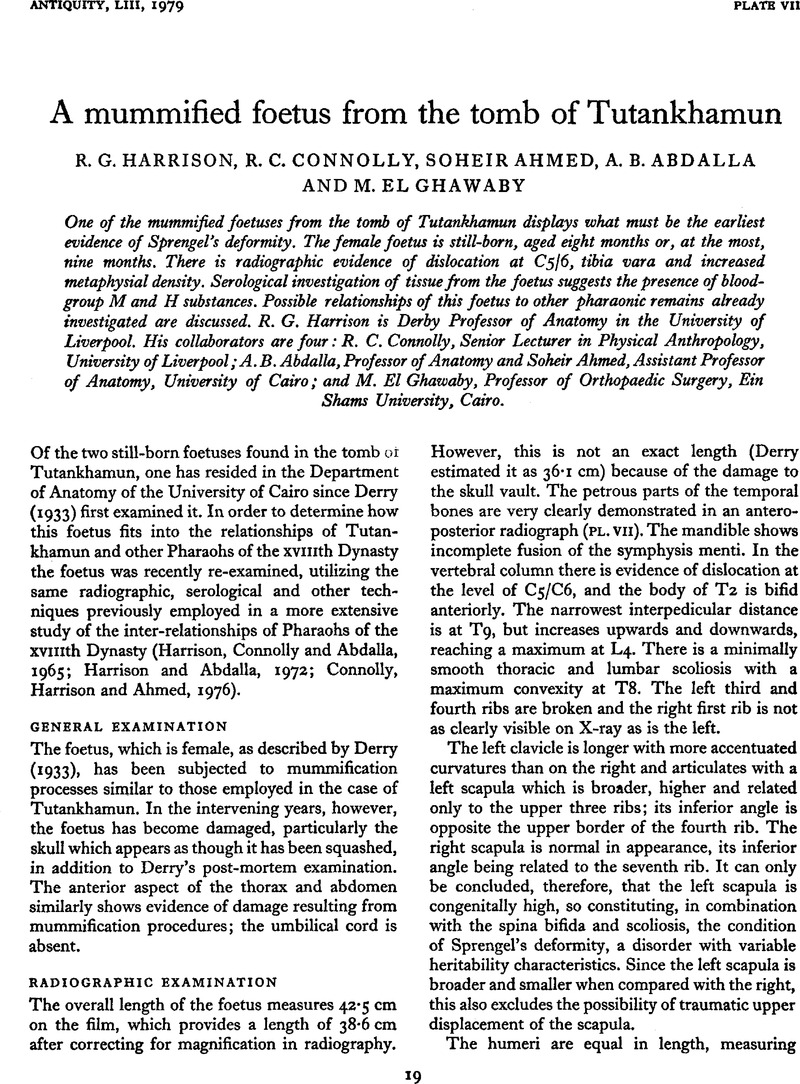Crossref Citations
This article has been cited by the following publications. This list is generated based on data provided by Crossref.
Fuchs, Helmut
Lisse, Thomas
Abe, Koichiro
and
De Angelis, Martin Hrabé
2006.
Standards of Mouse Model Phenotyping.
p.
35.
Kozma, Chahira
2008.
Skeletal dysplasia in ancient Egypt.
American Journal of Medical Genetics Part A,
Vol. 146A,
Issue. 23,
p.
3104.
Hellier, C.A.
and
Connolly, R.C.
2009.
A re-assessment of the larger fetus found in Tutankhamen's tomb.
Antiquity,
Vol. 83,
Issue. 319,
p.
165.
Kozma, Chahira
2010.
Genetic Disorders Among Arab Populations.
p.
273.
Hawass, Zahi
and
Saleem, Sahar N.
2011.
Mummified Daughters of King Tutankhamun: Archeologic and CT Studies.
American Journal of Roentgenology,
Vol. 197,
Issue. 5,
p.
W829.
Ashrafian, Hutan
2012.
Familial epilepsy in the pharaohs of ancient Egypt's eighteenth dynasty.
Epilepsy & Behavior,
Vol. 25,
Issue. 1,
p.
23.
Rühli, F.J.
and
Ikram, S.
2014.
Purported medical diagnoses of Pharaoh Tutankhamun, c. 1325 BC-.
HOMO,
Vol. 65,
Issue. 1,
p.
51.
Robbins Schug, Gwen
2020.
The Mother-Infant Nexus in Anthropology.
p.
235.
Braulińska, Kamila
Kownacki, Łukasz
Ignatowicz-Woźniakowska, Dorota
and
Kurpik, Maria
2022.
The “pregnant mummy” from Warsaw reassessed: NOT pregnant. Radiological case study, literature review of ancient feti in Egypt and the pitfalls of archaeological and non-archaeological methods in mummy studies.
Archaeological and Anthropological Sciences,
Vol. 14,
Issue. 8,
Hosny, Gamal Ahmed
Hernigou, Philippe
and
Alashhab, Mohamed
2024.
Orthopedics in Ancient Egypt.
Journal of Arthroscopy and Joint Surgery,
Vol. 11,
Issue. 2,
p.
52.
2024.
Breed Differences in Dog Behavior.
p.
93.
Hernigou, Philippe
Hosny, Gamal Ahmed
and
Scarlat, Marius
2024.
Evolution of orthopaedic diseases through four thousand three hundred years: from ancient Egypt with virtual examinations of mummies to the twenty-first century.
International Orthopaedics,
Vol. 48,
Issue. 3,
p.
865.



